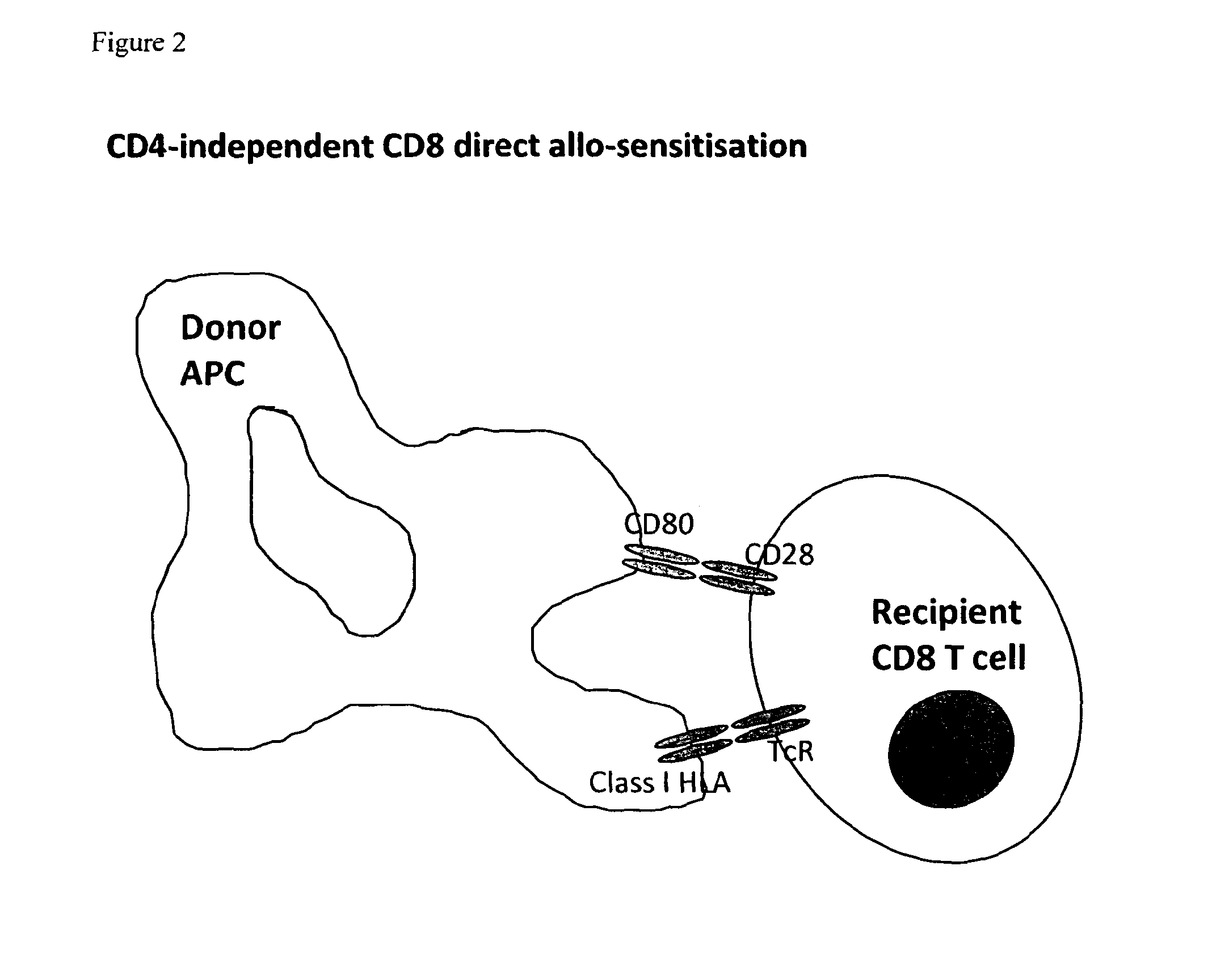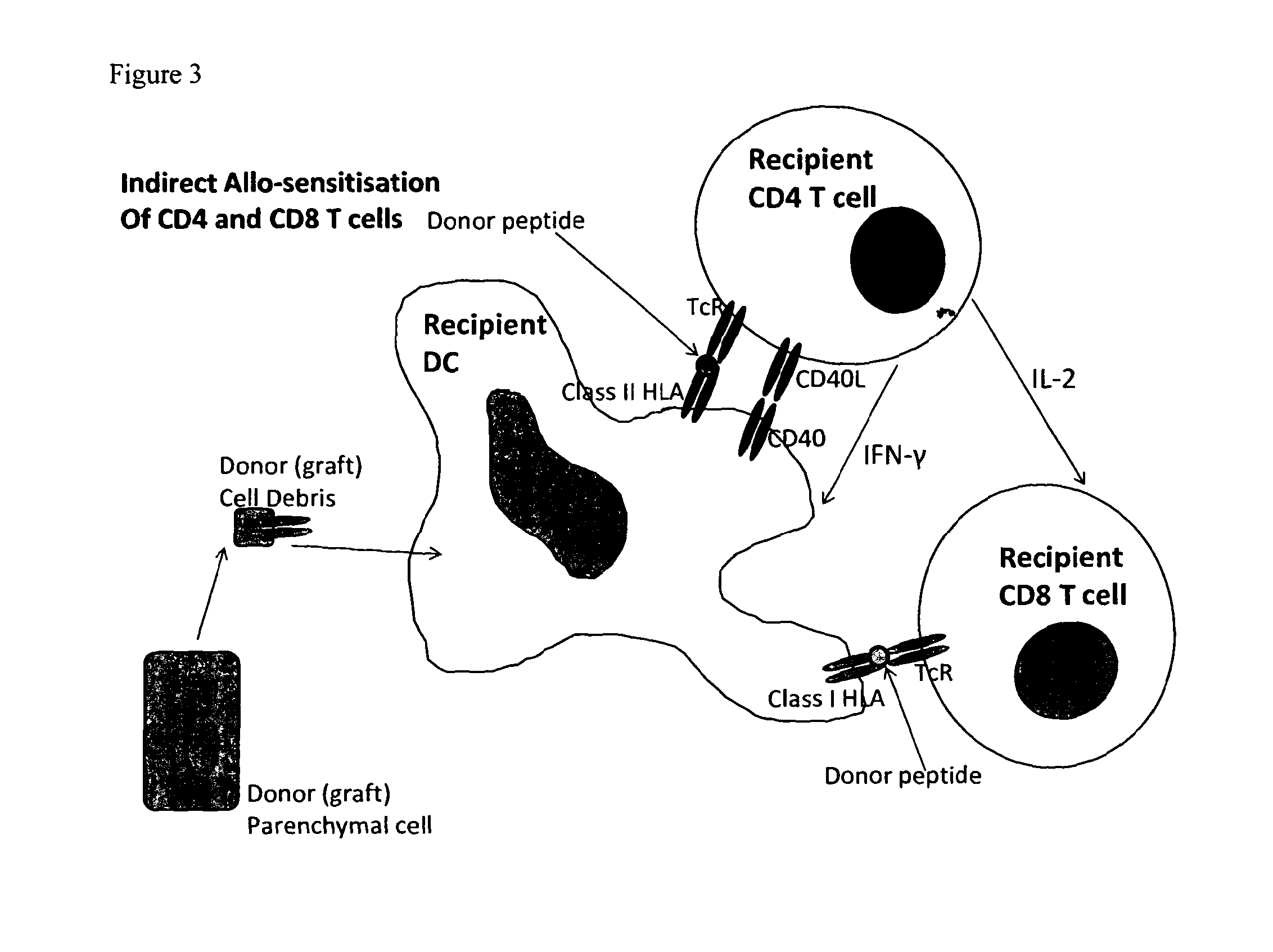Conjugate molecule
a technology of conjugates and molecules, applied in the field of conjugates, can solve the problems of difficult and complex transplantation, high risk of rejection, and high cost, and achieve the effect of improving the quality of conjugation, and avoiding the formation of a perfect match
- Summary
- Abstract
- Description
- Claims
- Application Information
AI Technical Summary
Benefits of technology
Problems solved by technology
Method used
Image
Examples
example 1
Generation of Peptides
Sequencing of BB7.2 Hybridoma
[0185]Total RNA was extracted from BB7.2 hybridoma cell pellets using the Fusion Antibodies Ltd. in house total RNA extraction protocol. The extracted mRNA was reverse transcribed to generate cDNA using an oligo (dT) primer. Ths cDNA was used as a template for PCR reactions using oligonucleotide primers flanking the VH and VL regions of the monoclonal antibody.
[0186]The PCR-amplified VH and VL DNA products were cloned into the pCR2.1 sequencing vector (Invitrogen) and transformed into TOP10 E. coli cells. Positively transformed colonies were isolated and sequenced by Fusion Antibodies Ltd.
Conjugate A Comprising the BB7.2 Hybridoma ScFv
[0187]The polypeptide conjugate (denoted conjugate A) comprising HLA-G, β2-microglobulin and the ScFv portion of BB7.2 was generated as two polypeptide chains. The first comprised the HLA-G fused to the VH domain of BB7.2 and the second comprised the VL domain of BB7.2 fused to β2-microglobulin. Each f...
example 2
Generation of Controls
[0200]Generation of Transfection Control An enhanced green fluorescent protein (EGFP) sequence was cloned into pcDNA3.1 then extracted by digestion using BamHI / XhoI restriction enzymes. pcDNA3.1 was also digested with BamHI / XhoI. Following separation by agarose gel electrophoresis and gel extraction, the EGFP sequence and linearised pcDNA3.1 vector were ligated together using T4 DNA ligase. TOP10 cells were then transformed with this vector. The sequence of EGFP was confirmed by sequence analysis performed at Geneservice. A plasmid maxipreparation was then performed.
Generation of Experimental Controls
[0201]Full-length HLA-G, soluble HLA-G or β2-microglobulin sequences were cloned into pcDNA3.1 for use as experimental controls
[0202]Full-length HLA-G cDNA was derived from reverse transcribed RNA extracted from JEG3 cells. Primers were designed for use with the pcDNA3.1 directional TOPO cloning system (Invitrogen) in accordance with the manufacturer's instructions...
example 3
Transfection Experiments
[0206]Transient transfection of COS7 cells was performed using Superfect and subsequently Attractene reagent (purchased for use with serum-free medium).
COS7 Transfection Control
[0207]COS7 cells were transiently transfected with EGFP constructs to test whether the transfection system was working. 48 to 72 hours after transfection, COS7 cells were harvested by trypsinisation. Cells were then analysed by flow cytometry which revealed that 40-50% of COS7 cells were expressing EGFP (FIG. 11).
[0208]COS7 cells were also transfected with conjugate A or HLA-G / β2-microglobulin or were also co-transfected with conjugate A with furin to enhance cleavage of the furin cleavage site. Supernatants from these three experiments were collected at 72 hours after transfection for use in downstream applications.
Stable Transfection of K562 Cells with, ILT2 and ILT4 Plasmids
[0209]ILT2 and ILT4 plasmids were mixed with Attractene transfection reagent and incubat...
PUM
| Property | Measurement | Unit |
|---|---|---|
| pH | aaaaa | aaaaa |
| molecular weight | aaaaa | aaaaa |
| molecular weight | aaaaa | aaaaa |
Abstract
Description
Claims
Application Information
 Login to View More
Login to View More - R&D
- Intellectual Property
- Life Sciences
- Materials
- Tech Scout
- Unparalleled Data Quality
- Higher Quality Content
- 60% Fewer Hallucinations
Browse by: Latest US Patents, China's latest patents, Technical Efficacy Thesaurus, Application Domain, Technology Topic, Popular Technical Reports.
© 2025 PatSnap. All rights reserved.Legal|Privacy policy|Modern Slavery Act Transparency Statement|Sitemap|About US| Contact US: help@patsnap.com



